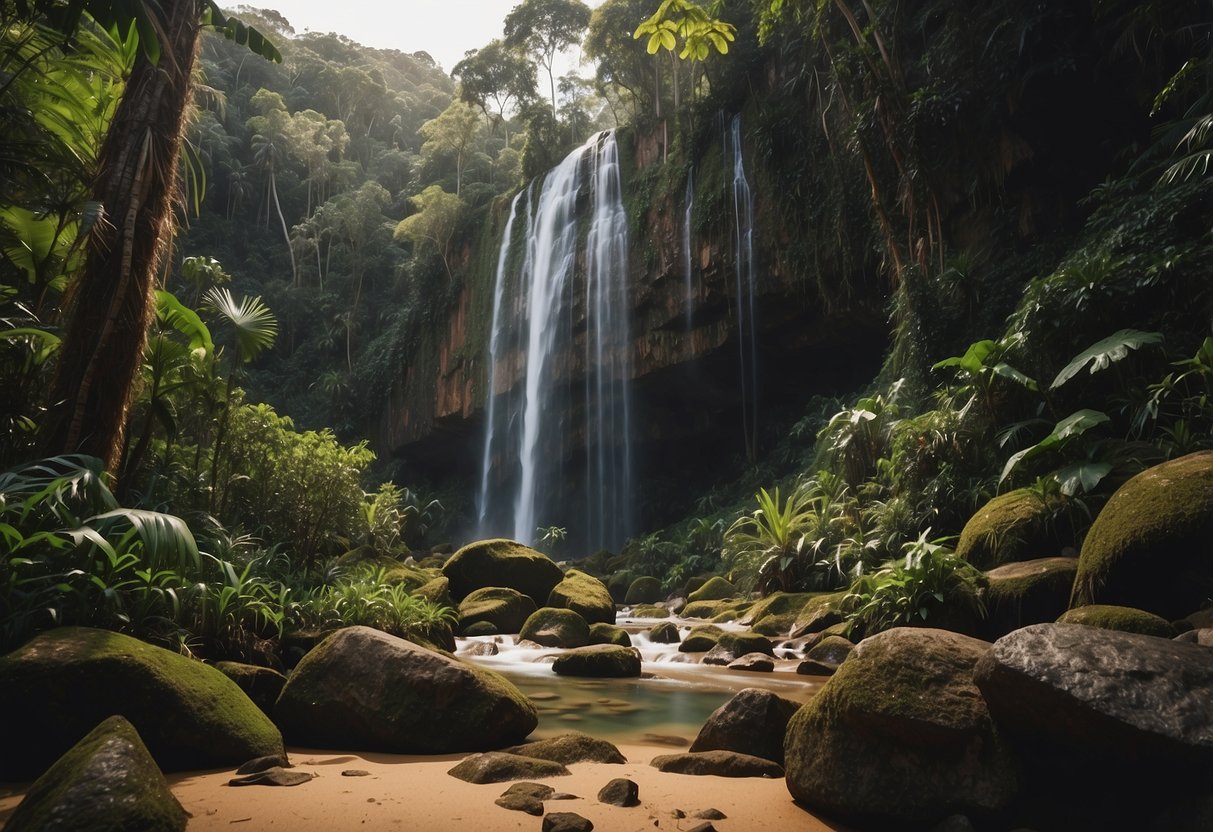
Madagascar’s Breathtaking Coasts
Madagascar boasts stunning coastlines with pristine beaches, turquoise waters, and opportunities for island adventures. From the famous Nosy Be to the idyllic Sainte Marie, the coasts provide diverse natural beauty and unique experiences.
Pristine Beaches and Turquoise Waters
The beaches of Madagascar are often characterized by white sand and clear, turquoise waters. These include Nosy Be, an island paradise known for its vibrant marine life and coral reefs that are perfect for snorkeling and diving.
Sainte Marie, another gem, features calm, shallow waters that are ideal for swimming and kayaking. Off its coast, visitors can spot humpback whales during migration season.
Along the southeastern coast of Africa, Madagascar’s less frequented beaches offer tranquility and solitude. Palms and casuarina trees frame these beaches, creating picturesque landscapes that entice nature lovers and photographers alike.
Islands and Seaside Adventures
Nosy Be is a hub for various seaside adventures, including sailing, fishing, and exploring nearby islets. The island’s warm waters invite travelers to immerse themselves in unique underwater experiences with its abundant marine biodiversity.
Sainte Marie offers historical intrigue with its pirate cemetery and shipwreck diving. Besides exploring the rich history, visitors can engage in paddleboarding and beachcombing on its serene shores.
Madagascar’s coastal islands offer different facets of relaxation and adventure, presenting travelers with endless opportunities to connect with nature. The splendor of Madagascar’s coasts lies in their unspoiled beauty and the variety of activities they support.
Taste of Madagascar
Madagascar offers a culinary adventure with its unique blend of flavors influenced by its rich history and diverse culture. The cuisine features staple ingredients like rice and zebu, with local dining experiences ranging from traditional “hotelys” to coastal seafood dishes.
Malagasy Cuisine and Specialties
Malagasy cuisine centers around rice, which is served with almost every meal. One prominent dish is Romazava, a hearty stew made with leafy greens, meat, and flavorful broth. Zebu, a type of local cattle, provides much of the protein, whether it’s grilled, stewed, or minced into sausages called Koba.
Ravitoto is another staple, consisting of pork cooked with pounded cassava leaves. The flavor is earthy and often complemented with a touch of coconut milk. Coastal regions add their flair with abundant and fresh seafood, including grilled fish and shrimp dishes, often seasoned with ginger and garlic.
Across the island, street food is popular, offering quick bites like samosas and mofo gasy—a sweet rice cake typically enjoyed at breakfast. The French colonial influence is evident in many pastries and bread, adding to the island’s diverse culinary landscape.
Dining and Drinking Experiences
Dining in Madagascar ranges from casual quick eats at local hotelys to more formal restaurants offering exquisite meals. Hotelys, which are small local eateries, provide affordable and authentic Malagasy meals, making them a favorite among locals and travelers alike.
For those who enjoy beverages, Madagascar offers a variety of locally produced drinks. Three Horses Beer (THB) stands out as the national beer and pairs well with most entrees. Tropical juices made from lychee, mango, and other local fruits add a refreshing touch to meals.
The capital city, Antananarivo, features many restaurants that serve both traditional Malagasy dishes and international cuisine. Coastal cities specialize in seafood, providing fresh catches daily. Whether dining in bustling markets or serene beachfront restaurants, visitors are sure to enjoy a rich array of flavors.